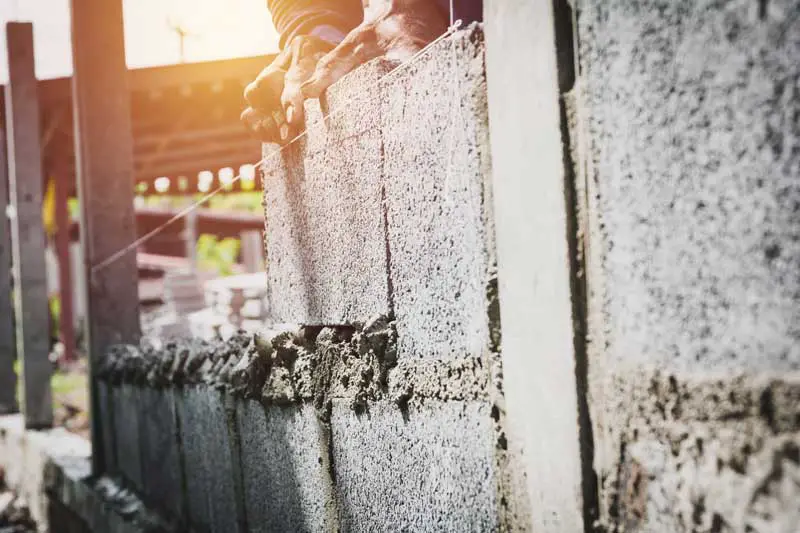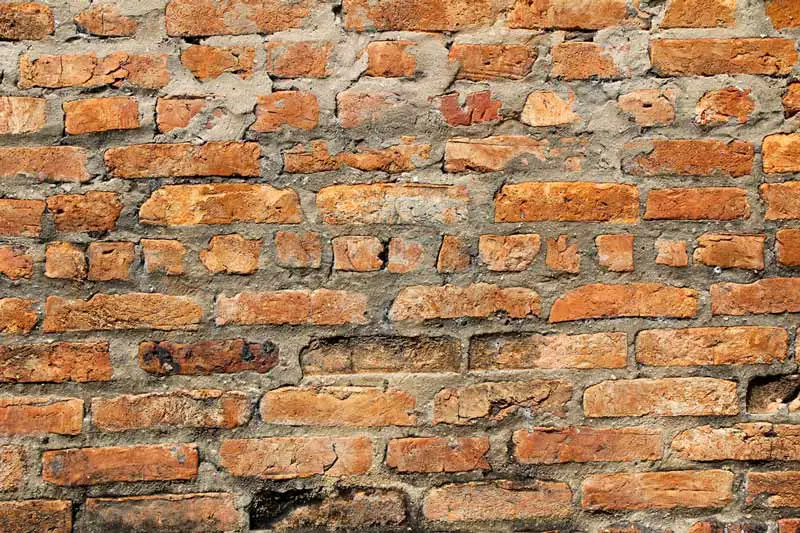
Lime mortars, plasters and renders can often be confused with cement alternatives. There are different types of lime and sometimes lime is even added to cement to help improve certain characteristics. So what are the main differences between lime and cement?
The main differences are curing time, cost, convenience, compressive strength and ease of use. Cement has a faster set time, and is often cheaper and more convenient to purchase. Lime has less compressive strength compared to cement and requires specialist tradespeople to use it correctly. Cement has more compressive strength but is much more brittle, that’s why lime is well suited to old buildings and modern eco-builds where flexibility is important. Lime is often used for restoration work instead of new builds due to its higher labour and material cost.
Lime and cement are both a type of binder. A binder, in this case, is a material that bonds together with aggregates such as sand to form a mortar that will set, harden and adhere to materials to stick them together. So what are the main differences between lime and cement?
1. Lime and Cement Cure in Different Ways
The way in which lime and cement set and harden is one of the main differences between them. Cement sets via a reaction with water, known as hydration. The water molecules react with the cement and crystalise causing the cement to harden. This reaction is not immediate but takes place over a period of time, known as the ‘initial set time’. Typically, cement mortars will achieve ‘full set’ in 24-48 hours, depending on the mixture used and the specific cement. Thick concrete can take much longer to cure, depending on exactly how thick. Concrete will usually be cured enough to walk on within 48 hours.
There are 2 main types of lime for building. Hydraulic lime and quicklime. Quicklime, which is a powder, reacts with water in a process called slaking. Slaked quicklime creates lime putty which is usually matured for a number of months before use. Lime putty looks like very thick double cream, it is mixed with sand and other aggregates to make lime mortars and plasters. Putty-based mortars and plasters set via carbonation. The lime absorbs carbon dioxide in the air, effectively turning it back into the calcium carbonate-containing stone it was originally. Putty-based mortars can take weeks to fully set, which is a major drawback when compared to portland cement’s speedy set times.

Hydraulic limes are fairly similar in nature to portland cement. They set via a reaction with water and come in 3 strengths, NHL 2, NHL 3.5 and NHL 5. NHL 2 is the least hydraulic and NHL 5 is the most hydraulic. The more hydraulic the lime, the faster and harder the set. Hydraulic limes should only be used in exposed areas where the long curing time of putty limes would cause issues. If putty-based lime mortars are used in extremely wet conditions they will never set, that’s why it’s important to have hydraulic limes as an option.
2. Lime has Less Compressive Strength Than Cement, but Much More Flexibility
Both lime mortars and cement are suitable for use in non-high-rise buildings, however, where compressive strength is concerned, cement far outperforms lime. High compressive strength makes cement the perfect building material for high-rise buildings and skyscrapers. This does not mean that lime doesn’t have its place in construction though. While high strength is good for massive buildings, lime may be more suitable for homes.
Cement’s strength makes it very brittle if the building moves slightly, leading to large cracks and damage. Lime is softer but also far more flexible. Instead of just cracking and breaking like cement, lime forms thousands of ‘micro-cracks’ which will self-heal as water runs into these cracks, dissolving and then depositing ‘free lime’ that is within the mortar. This makes lime essential for repairing historical buildings that may move slightly on their foundations and eco-buildings. Eco-buildings are often constructed with earth, straw, timber, sheep’s wool and other renewable materials. Lime will allow these buildings the flexibility and breathability they require.
Related article: Why is Cement Used Instead of Lime in Modern Buildings?
3. Lime is Breathable, and Cement is Waterproof
Lime mortars, plasters and renders are wonderful building materials. They are flexible, look great and are breathable. Many people don’t understand why this is such an important characteristic, especially for old and historical buildings. When these older buildings were constructed, it was usually assumed that somewhere along the way some water would get into the building.
To help manage this, lime mortars and plasters were used. Because they are breathable it meant they could soak up and expel any water that got into places it shouldn’t be, without causing any damage. Buildings originally constructed with lime should always be repaired with a similar lime. In many cases, these buildings have been repaired with portland cement mortars.
Related article: What Are The 3 Main Types of Lime Used in Construction?
Cement’s waterproof characteristics are usually seen as a good thing, and normally they are. Modern houses are built with the intention of water never getting in, therefore a breathable mortar is not so important. However, when portland cement mortars are used on historical buildings they often cause major damage. Trapped water can lead to the face of bricks and masonry cracking off. In addition, these old buildings will often have issues with dampness and mould caused by using non-breathable mortars and plasters.

4. Lime and Cement Have to be Used in Different Ways
Because lime and cement set via different processes, they must be used differently. In modern buildings, using cement is fairly straightforward. Its ease of use and convenience is one of the factors which has led cement to become the dominant binder used in construction. As long as it’s not too cold or wet, cement will set quickly, allowing a fast build rate, which is important to keep costs down in today’s economy. This isn’t always the case with lime building though.
Building with lime mortars can be extremely rewarding. Lime mortars have a much higher workability than cement, and many tradesmen often remark on how enjoyable lime is to use when compared to cement. However, building with lime is a much more involved process. Lime needs to be protected from harsh wind, rain, cold and heat. This is usually done by coving the lime with hessian. In hot conditions hessian can be dampened to help stop the lime from drying out too quickly.
Generally speaking, the slower lime cures the better the finished result. Lime mortars, plasters and renders that cure slowly over multiple weeks will exhibit less shrinkage and cracking. The lime itself will also set harder. In hot conditions, it’s common practice to mist the mortar or plaster down with water if it seems to be curing too quickly. The aftercare of lime mortars is the reason the labour cost is higher. Lime requires many extra precautions over cement, and people often don’t want to pay for them. Even though, in my opinion anyway, buildings constructed with lime are far superior to cement ones.
Related article: The Differences Between Lime Plaster, Mortar and Render

